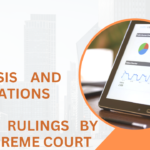Buying car insurance is a necessary expense for all drivers, but the costs can add up. Car insurance rates are based on a variety of factors, many of which are within your control. Making smart choices about your coverage, driving habits, and more can lead to significant savings on your auto insurance premiums.
Thank you for reading this post, don't forget to subscribe!If you’re looking for ways to lower your car insurance costs, here are some of the most effective tips:
Choose an Appropriate Coverage Level
- Evaluate your needs – Don’t pay for more coverage than you require. Consider dropping comprehensive and collision coverage on older cars.
- Increase deductibles – Higher deductibles lead to lower premiums but more out-of-pocket costs in the event of a claim. Choose the highest deductible you can afford.
- Drop unnecessary extras – Skip add-ons like rental reimbursement or roadside assistance if you don’t need them.
Shop Around and Compare Rates
- Get quotes from multiple insurers – Rates can vary dramatically between insurance companies, so shop around.
- Look for discounts – Take advantage of discounts for things like a good driving record, good student grades, and multiple policies with the same insurer.
- Consider usage-based insurance – These plans base rates partially on how much you drive. They can save money for low-mileage drivers.
- Re-evaluate regularly – Shop for cheaper rates every 1-2 years as new insurers enter the market.
Choose Your Car Carefully
- Insure a low-risk vehicle – Insurance costs more for sports cars, luxury vehicles, SUVs, and cars with high accident rates. Choose a safer, less expensive car.
- Drop extra coverage on older cars – Comprehensive and collision coverage often exceeds an older car’s cash value.
- Ask about safety features – Cars with airbags, anti-lock brakes, and anti-theft devices can qualify for discounts.
- Maintain your car well – Fix paint scratches, broken signals, and cracked windshields. Poor maintenance leads to higher premiums.
Improve Your Driving Habits
- Keep a clean driving record – Tickets, accidents, and DUIs will substantially increase your insurance rates. Drive safely.
- Take a defensive driving course – Many insurers offer discounts for completing a class. Refresh your skills every few years.
- Reduce mileage – The more you drive, the more risk you take. Telecommute or use public transportation when possible.
- Avoid frequent claims – Too many claims can cause premium hikes or policy termination. Only report substantial claims.
Optimize Other Factors
- Increase your credit score – Insurers often use credit-based scores to set rates. Improve your credit to get better premiums.
- Move to a safer area – Insurance costs more in areas with higher accident and crime rates. Move to a safer neighborhood.
- Ask about discounts – You may save by insuring multiple vehicles with the same company or bundling home and auto policies.
- Pay annually – Paying in 6- or 12-month installments rather than monthly can lead to savings.
- Join an organization – Being a member of certain groups, like AAA or a university alumni association, can qualify you for discounts.
Increase Your Deductibles
One of the most effective ways to lower your car insurance premiums is to increase your deductible. The deductible is the amount you pay out-of-pocket before your insurance coverage kicks in after an accident or claim.
- Higher deductibles lead to lower monthly premiums but increase the amount you’ll pay per claim.
- Choose the highest deductible amount you can afford – often $500, $1,000, or even $2,000.
- This strategy makes financial sense if you have a good driving record and don’t make frequent claims.
- You’ll need to have savings to cover the higher deductible amount in the event of a claim.
Drop Unnecessary Extras
Many insurance policies come loaded with add-ons and extras you may not need. Eliminating these can help lower your rates.
- Skip roadside assistance coverage if you’re already a member of AAA or have warranty coverage.
- Drop rental car reimbursement if you can afford to pay out-of-pocket for a rental.
- Avoid Mechanical Breakdown Insurance (MBI) – you likely have powertrain coverage under your warranty.
- Remove accident forgiveness protection if you have a clean driving record.
- Don’t pay for OEM (original equipment manufacturer) parts coverage – aftermarket or recycled parts are often cheaper.
Bundle Home and Auto Insurance
Buying home and auto insurance from the same company can lead to a discount of up to 15% off your premiums. This is because bundling policies makes you a less risky customer in the insurer’s eyes.
- Shop joint home and auto quotes when getting new insurance.
- Time your policies to renew simultaneously so bundling saves you the most money.
- Compare discounts across insurers carefully – bundled savings and overall rates can vary greatly.
- Make sure you need coverage from the same company – shop each policy separately if not.
Improve Your Credit Score
Insurers often use your credit-based insurance score to set premiums. Maintaining a higher score can significantly lower the rates you pay.
- Check your credit reports and fix any errors immediately.
- Pay bills on time every month to avoid dings to your score.
- Keep balances low on credit cards and other revolving credit.
- Limit credit inquiries by only applying for credit when needed.
- Contact your insurer for tips to improve your score and re-check it before renewing.
Review the Coverage of Older Vehicles
The value of your car rapidly declines as it ages. At a certain point, repairing it doesn’t make financial sense and total loss is likely. Eliminating collision and comprehensive coverage on older cars can save substantially once they become worth less than $1,000-$2,000.
- Determine the current cash value via Kelley Blue Book or a similar pricing guide.
- If it’s less than 10 times the collision and comprehensive premiums, consider dropping both.
- Keep liability coverage at the same levels so you’re protected against damage to others.
- Divert premium savings to build a “car repair sinking fund” instead of paying for coverage.
Choose a Vehicle With Safety Features
Modern vehicle safety technologies like airbags, automatic emergency braking, and advanced driver assistance systems help avoid accidents. Choosing a safer car with these features can lower your premiums.
- Look for vehicles with top safety ratings from the IIHS and NHTSA.
- Select makes and models known for safety – many SUVs, minivans, and sedans qualify.
- Opt for the trim packages with advanced safety equipment when possible.
- Ask your insurer about discounts for specific features before buying a car.
- Maintaining these technologies properly helps them work during an accident.
Ask About Discounts
Auto insurers offer many discounts to attract lower-risk policyholders. Don’t be shy about asking – you could save hundreds per year.
- Good student discount – for young drivers with B averages or better
- Defensive driving course – for drivers who complete an approved class
- Low mileage discount – for driving under a set limit per year
- Multi-policy discount – for buying several policies from the same insurer
- Multi-car discount – for insuring more than one vehicle on a policy
The best way to find the lowest car insurance rates is to thoroughly shop and compare quotes from at least 4-5 different insurers. Be sure to inquire about any discounts you may be eligible for and adjust your coverage to get the optimal balance of protection and premiums. A little time invested upfront can pay off in hundreds of dollars saved every year.
Frequently Asked Questions About Lowering Car Insurance Premiums
1. How much does raising my deductible save on car insurance?
Raising your deductible from $500 to $1000 can reduce your premiums by 15-30%, leading to several hundred dollars in savings per year in most cases. Going up to a $2000 deductible often saves 40% or more.
2. Should I drop collision and comprehensive coverage on an old car?
Once your car is worth less than 10 times your collision/comprehensive premiums, it often makes sense to drop both coverages and simply have liability insurance. Put those premium savings into a “car repair fund” instead.
3. Which insurers typically have the lowest car insurance rates?
Insurance rates can vary significantly by location and driver factors. However, GEICO, Progressive, and USAA are often the cheapest for drivers with good credit and clean records. Shop around for quotes.
4. How does marrying or combining households affect car insurance rates?
Combining policies with your spouse or partner can save money through multi-car and multi-policy discounts. However, rates are based on the highest-risk driver, so premiums can rise if driving records are very different.
5. Can taking a driver’s education course lower a teenager’s car insurance costs?
Yes, completing an approved driver’s ed, defensive driving, or safe driving course can earn your teenager a substantial discount on car insurance – often 10% or more.
6. Which vehicles are typically the cheapest to insure?
Smaller, safer cars like the Honda Accord, Toyota Camry, Nissan Altima, and Subaru Legacy tend to have the lowest insurance rates. Large SUVs and luxury cars have much higher premiums on average.
7. If I drive less than 7,500 miles per year, can I qualify for a low mileage discount?
Most insurers offer discounted rates for driving 5,000-7,500 miles or less annually. Verifying actual odometer readings can save you 5-15% on premiums.
8. How much does a speeding ticket raise your car insurance costs?
Just one speeding citation can increase your insurance premiums by 15-30% on average, costing you several hundred extra dollars per year. Multiple tickets have an even greater impact on rates.
Conclusion
Finding cheap car insurance takes some effort, but can result in significant long-term savings. Comparing rates, optimizing coverage levels and deductibles, improving your driving record, choosing the right car, bundling policies, and finding discounts are the most effective ways to lower your premiums. Shop around, make smart choices about your policy, ask questions, and put in a little legwork to keep more money in your pocket without sacrificing necessary protection.










